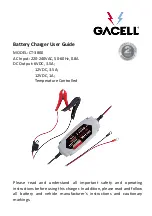
A feature of the TCS system functions similar to a
limited-slip differential and controls the wheel spin
across a driven axle. If one wheel on a driven axle is
spinning faster than the other, the system will apply the
brake of the spinning wheel. This will allow more engine
torque to be applied to the wheel that is not spinning.
This feature remains active even if TCS and ESP are in the
“Partial Off” or “Full Off” modes. Refer to “Electronic
Stability Program (ESP)” in this section for more
information.
Brake Assist System (BAS)
This system complements the ABS by optimizing the
vehicle braking capability during emergency braking
maneuvers. This system detects an emergency braking
situation by sensing the rate and amount of brake appli-
cation and then applies optimum pressure to the brakes.
This can help reduce braking distances.
Applying the brakes very quickly results in the best BAS
assistance. To receive the benefits of this system, you
must apply continuous brake pedal pressure during the
stopping sequence. Do not reduce brake pedal pressure
unless braking is no longer desired. Once the brake pedal
is released, the BAS is deactivated.
STARTING AND OPERATING
277
5
Summary of Contents for 2009 Challenger SRT8
Page 1: ...C H A L L E N G E R S R T 8 OWNER S MANUAL 2009 ...
Page 4: ......
Page 7: ...INTRODUCTION 5 1 ...
Page 10: ......
Page 72: ......
Page 104: ...102 UNDERSTANDING THE FEATURES OF YOUR VEHICLE ...
Page 105: ...UNDERSTANDING THE FEATURES OF YOUR VEHICLE 103 3 ...
Page 106: ...104 UNDERSTANDING THE FEATURES OF YOUR VEHICLE ...
Page 156: ...INSTRUMENT CLUSTER 154 UNDERSTANDING YOUR INSTRUMENT PANEL ...
Page 295: ...STARTING AND OPERATING 293 5 ...
Page 320: ......
Page 336: ......
Page 386: ......
Page 404: ......
Page 416: ......
Page 417: ...INDEX 10 ...
Page 440: ...Chrysler LLC 81 226 0914 Second Edition Printed in U S A ...
















































